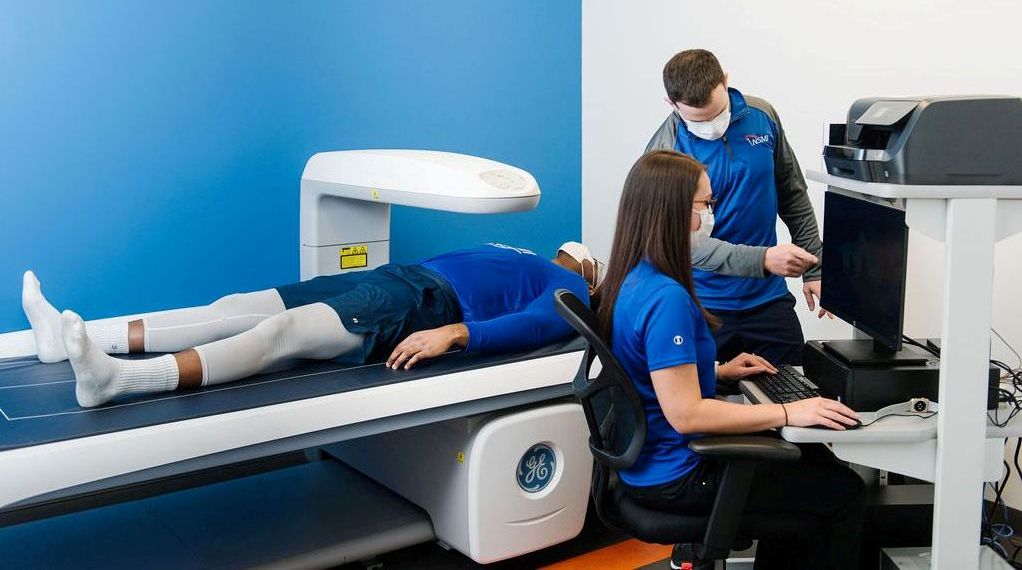What is the recommended frequency for bone density screenings?
Bone density screening is a medical test that measures the amount of minerals in bones. It is used to diagnose osteoporosis, a condition where bones become weak and brittle, making them more prone to fractures. Osteoporosis affects millions of people worldwide and is more common in women than men. To detect osteoporosis and other bone diseases early, regular bone density screenings are recommended. However, the frequency of these screenings depends on several factors, including age, gender, and medical history.
The recommended frequency for bone density screenings varies depending on the individual’s risk factors for osteoporosis. The National Osteoporosis Foundation recommends that women over the age of 65 and men over the age of 70 should have a bone density screening every two years. However, if an individual has risk factors for osteoporosis, they may need to have screenings more frequently.
Risk factors for osteoporosis include:
- Age: The risk of osteoporosis increases as people age.
- Gender: Women are more likely to develop osteoporosis than men.
- Family history: A family history of osteoporosis increases the risk of developing the disease.
- Race: People of Asian or Caucasian descent are at a higher risk of developing osteoporosis.
- Hormonal factors: Women who have gone through menopause are at a higher risk of developing osteoporosis due to a decrease in estrogen levels.
- Lifestyle factors: Smoking, excessive alcohol consumption, and a lack of physical activity can increase the risk of developing osteoporosis.
- Medical conditions: Certain medical conditions, such as hyperthyroidism, inflammatory bowel disease, and celiac disease, can increase the risk of osteoporosis.
- Medications: Long-term use of certain medications, such as corticosteroids and anticonvulsants, can increase the risk of osteoporosis.
Based on these risk factors, some individuals may need to have bone density screenings more frequently. For example, women who have gone through early menopause (before the age of 45) or who have a family history of osteoporosis may need to have screenings more often. Additionally, individuals who have already been diagnosed with osteoporosis may need to have screenings every year to monitor their condition and ensure that their treatment is effective.
In addition to regular bone density screenings, there are other steps individuals can take to reduce their risk of developing osteoporosis. These include:
- Getting enough quantity calcium and vitamin D: Calcium and vitamin D are most essential for strong bones. Good sources of calcium are include dairy products, green vegetables, and fortified foods. Vitamin D can be obtained through sun exposure or supplements.
- Exercise: Regular weight-bearing exercise, such as walking, jogging, and weightlifting, can help strengthen bones and reduce the risk of osteoporosis.
- Quitting smoking: Smoking can increase the risk of osteoporosis, so quitting is essential for maintaining bone health.
- Limiting alcohol consumption: Excessive alcohol consumption can also increase the risk of osteoporosis, so it is important to drink in moderation.
- Taking medication as prescribed: If an individual has been diagnosed with osteoporosis, they may need to take medication to slow the progression of the disease. It is essential to take these medications as prescribed to ensure they are effective.
It is important to note that the recommended frequency for bone density screenings may vary based on the guidelines of different organizations. For example, the United States Preventive Services Task Force recommends that women over the age of 65 and men over the age of 70 have bone density screenings every two years, while the American College of Obstetricians and Gynecologists recommends that women have a screening at age 65, regardless of risk factors.
Additionally, individuals who have exposure to radiation, such as those who have had frequent medical imaging tests, may need to have fewer bone density screenings.
While regular bone density screenings are essential for early detection and treatment of osteoporosis, they are not always necessary for everyone. Individuals who have a low risk of developing osteoporosis may not need to have screenings as frequently. However, it is important to talk to a healthcare provider to determine individual risk factors and the recommended frequency for bone density screenings.
In addition to the frequency of bone density screenings, it is also important to consider the accuracy of the screening test. Dual-energy X-ray absorptiometry (DXA) is the most commonly used test for measuring bone density. However, the accuracy of the test can be affected by several factors, including body size, weight, and other medical conditions. Additionally, DXA scans only measure bone density in specific areas of the body, such as the hip and spine, and may not detect osteoporosis in other areas.
To improve the accuracy of bone density screenings, healthcare providers may use other tests, such as quantitative ultrasound or CT scans. These tests can provide a more comprehensive evaluation of bone density and may be more accurate for certain individuals.
In conclusion, the recommended frequency for bone density screenings depends on individual risk factors for osteoporosis. Women over the age of 65 and men over the age of 70 should have a screening every two years, but individuals with risk factors may need to have screenings more frequently. It is important to talk to a healthcare provider to determine the appropriate frequency of bone density screenings and to take steps to reduce the risk of developing osteoporosis. Additionally, it is essential to consider the accuracy of the screening test and to use other tests, if necessary, to improve accuracy and detect osteoporosis in all areas of the body.





Thank you for writing this article. I appreciate the subject too.
Great write-up, I am normal visitor of one抯 website, maintain up the nice operate, and It is going to be a regular visitor for a lengthy time.
Thanks for your valuable post. In recent times, I have come to understand that the actual symptoms of mesothelioma cancer are caused by your build up connected fluid regarding the lining of the lung and the chest muscles cavity. The sickness may start in the chest location and propagate to other body parts. Other symptoms of pleural mesothelioma include losing weight, severe respiration trouble, throwing up, difficulty swallowing, and inflammation of the neck and face areas. It must be noted that some people with the disease do not experience any serious signs or symptoms at all.
I truly appreciate this post. I抳e been looking everywhere for this! Thank goodness I found it on Bing. You’ve made my day! Thank you again